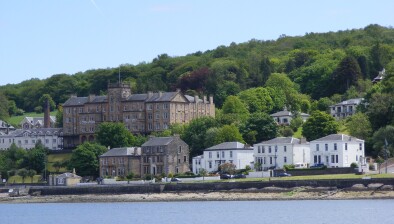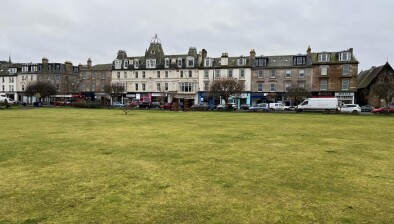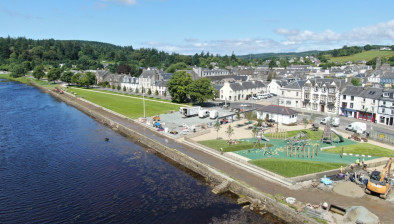Government rejects request to take over St Peter’s Seminary
The future of St Peter’s Seminary in Cardross is in doubt after the Scottish Government declined to take responsibility for the modernist ruin amid mounting maintenance costs.

Image credit Historic Environment Scotland
A new report from Historic Environment Scotland (HES) - commissioned by ministers – estimated that addressing the challenges to maintain the building and make it safe for public access could cost in excess of £13 million over 20 years.
Taking into account increasing pressure on public resources, the Scottish Government has therefore accepted the recommendation from HES to decline a request from the Catholic Church, which owns the building, to take St Peter’s into state care.
St Peter’s is an internationally renowned A-listed building in Cardross, near Dumbarton, commissioned in 1958 by the Archbishop of Glasgow. Opened in 1966, it was hailed as one of the finest modern buildings of the day, and received the RIBA Architecture award in 1967.
It was designed as a seminary shortly before the Catholic Church decided priests should be trained in the communities they would serve. And it was built in materials and in a style that are not easily adapted to alternative uses.
After only 14 years in use, the building was closed as a seminary in 1980, and has been systematically vandalised and reduced to a ruin.
Advice from Historic Environment Scotland notes at least £6m would need to be spent over five years, with further investment within 20 years, just to maintain the building and make it safe enough to allow limited public access – a process known as ‘curated decay’.
There have been a number of unsuccessful attempts to find a sustainable future for the building. This included an ambitious project led by the arts organisation NVA, which decided not to proceed in light of escalating risks.
Historic Environment Scotland was commissioned to advise the Scottish Government on future options for the building, and to give a view on the request by the Archdiocese of Glasgow that it be brought into the care of Scottish Ministers.
The HES report to the Scottish Government stated that the site is challenging from a conservation, safety and access perspective. Access, as might typically be expected at historic sites, would be difficult, so curated decay was given as the recommended approach.
The report concludes: “Having considered all of the issues, our advice is that we could not recommend that Ministers intervene by bringing St Peter’s into care as a Property in Care.”
Cabinet secretary for culture Fiona Hyslop has written to the Archdiocese of Glasgow, offering to facilitate a roundtable with any interested parties to discuss the report and what alternative solutions may be available.
Ms Hyslop said: “The Scottish Government has no choice but to accept the recommendations from Historic Environment Scotland not to take St Peters Seminary into state care, due to the risk and cost to the public purse it would entail to the detriment of other properties in care.
“We accept the report’s analysis that the only reasonable way forward for this site would be ‘curated decay’ and I plan to convene a meeting with all key partners to see if there is a way forward collectively to deliver what looks to be the only viable option for St Peters.”















